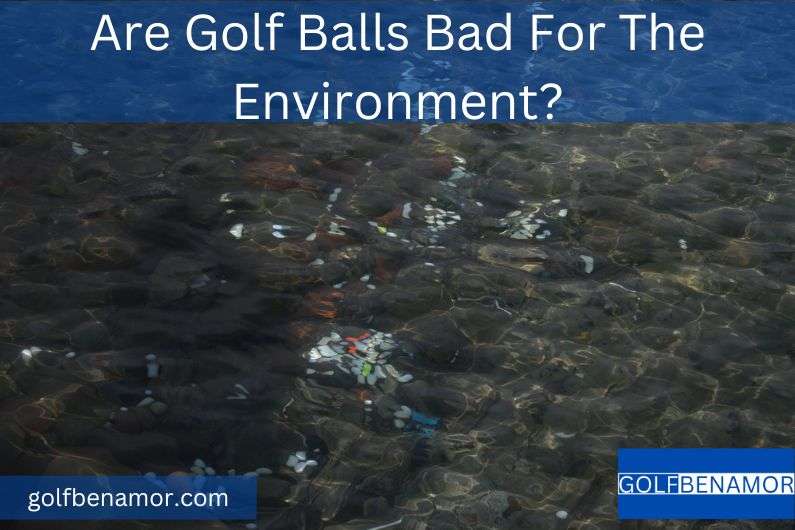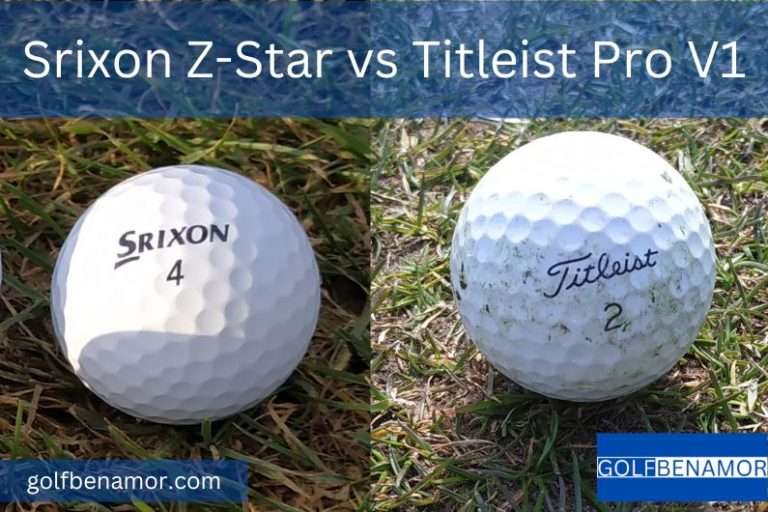“Golf Balls in cove of lake Ontario” by ‘it was 3 a.m.’ is licensed under CC BY 2.0 .
Are Golf Balls Bad for The Environment?
Golf is a wonderfully healthy game, right? Good for golfers who are getting exercise in green spaces and good for the environment because, well, there are green spaces. Right? Wrong!
As it turns out, golf equipment isn’t necessarily beneficial to the environment. For one, the plastic used to make them takes a thousand years to decompose naturally. Think about that the next time you pick up a packet of multi-colored plastic tees!
While golf courses themselves seem eco-friendly, they are largely comprised of just one type of plant…grass! Factor in the amount of forest and flora that were cleared to make space for these golf courses and the number of habitats that have been damaged as a result and the negative effect golf has on the environment starts to grow. And then there’s the amount of water and fertilizer used to maintain golf courses.
Golf in general has a lot to do to improve its eco-friendliness and the same is true when it comes to the ball.
How Are Golf Balls Bad for The Environment?
There are several ways that golf balls pollute the environment. Aside from the resources used when manufacturing a ball as well as the substances used, they are also very harmful to animals and aquatic life.
Golf balls contain zinc compounds and benzoyl peroxide which are toxic to marine animals. Some may also contain other heavy metals. While balls can take up to one thousand years to decompose naturally on land, they become compromised much sooner when submerged in water. The harmful materials leach out and are consumed by fish.
The rubber in balls, too, is dangerous. Each ball has the equivalent mass of three plastic bottles and when this is released into the ocean, it floats to the top and is eaten by plankton and other marine creatures. This is one of the ways in which microplastic enters the food chain.
While there is no documented study of land animals experiencing ill effects from balls, they are a potential choking hazard for larger creatures and may also damage habitats. And similar to the marine life above, the breaking down of balls in water could contaminate an animal’s source of drinking water and spread microplastics into their system.
One of the simplest forms of pollution is litter. Balls can also be found discarded in many places outside golf venues.
A young scuba diver spends many hours retrieving balls from Carmel Bay. Presumably, they have ended up there after being hit into water hazards at local courses. Alex Weber estimates she has pulled 50,000 balls from the water since 2016. While balls only account for a tiny percentage of the plastics that humans put into the world’s oceans in certain areas they could be the biggest culprit. Pebble Beach Golf Links is just one of the courses in the region.
It is estimated that 300 million balls are lost in the United States alone so the worldwide figure is probably double that. Not all are lost in water hazards of course and many will be contained within the confines of the club but even so it’s clearly a problem in need of a solution.
Can You Buy Biodegradable Golf Balls?
Yes! It is possible to buy balls that are biodegradable. While the choice is nowhere near as great as regular balls, certain companies have released balls that are kind to the environment. One such ball is Albus Golf Ecobioball. It is non-toxic and biodegrades within 48 hours in water. Even better is the fish food in its core. Instead of releasing harmful toxins, the ball releases something for marine life to enjoy!
Another example is Dixon’s Earth ball. Possibly the longest eco-friendly ball on the market, it is made from 100% recyclable materials and the packaging is also fully recycled.
Finally, there’s the aptly named company, Biodegradable Golf Balls. These eco-friendly balls are water-soluble and just dissolve, making them the perfect choice for waterfront driving ranges.
How Do Biodegradable Balls Compare to Normal Golf Balls?
Given their scarcity in the modern game, it’s understandable that biodegradable balls still perform at a much lower level than normal golf balls. Their price is another major factor in their lack of popularity.
Performance
Biodegradable balls tend to offer less compression than regular balls and as a result, don’t fly as far. In addition to this, they bounce less off the ground meaning golfers can expect less ‘run’ from them.
Biodegradable balls are also less durable and may not be suitable for multiple rounds over multiple weeks (though if you’re still playing the same ball after all that golf you have our respect!).
Price
The biodegradable balls on the market are priced between $34.50 and $36 per dozen which works out at $2.88-$3 per ball. This is quite expensive, especially for a golf ball that offers limited performance. To put it in perspective, this is much more expensive than the hugely popular Srixon Soft Feel which comes in at $22.99 per dozen and the Titleist Velocity priced at $30.
As the popularity of biodegradable balls grows, the price will come down. Until then, making the game a little eco-friendlier is costly on the pocket.
Are Golf Balls Recyclable?
Sadly, golf balls are not recyclable. They can, however, be repurposed with a bit of creativity. People have been known to make Christmas tree ornaments out of old balls and other decorations such as snowmen. Some use them as vase fillers.
Are Golf Balls Made from Recycled Materials?
Balls such as the Dixon Earth, Wind, Fire and Spirit balls are made from 100% recyclable materials while their packaging is fully recycled.
Are Golf Balls Bad for The Environment: Conclusion
As with pretty much everything humans make and do, golf balls are an environmental hazard. As people grow ever more environmentally conscious golf is going to have to work harder to improve its environmental credentials and reduce the impact it has on its surroundings.
Frequently Asked Questions [FAQ]
How long do golf balls take to decompose?
Golf balls can take up to one thousand years to decompose fully on account of the materials used.
Is It Bad to Hit Golf Balls into the Ocean?
It is not safe to hit balls into the ocean for multiple reasons.
They will sink and cover the ocean floor, potentially damaging the habitats of creatures that live there. Golf balls also contain zinc oxide, zinc acrylate and benzoyl peroxide which, when released in water, are toxic to marine life. Shards of balls can break off and be consumed by fish. The rubber inside the ball will float to the top and again be eaten by plankton and other marine creatures. This is how microplastics enter the food chain.
If golfers are looking at hitting balls into the ocean, biodegradable balls are a safe option. The best choices are either the Albus Golf Ecobioball or the Biodegradable Golf Balls. Given that they are both non-toxic and biodegradable, they will break down in water without causing any damage to the ecosystem.








